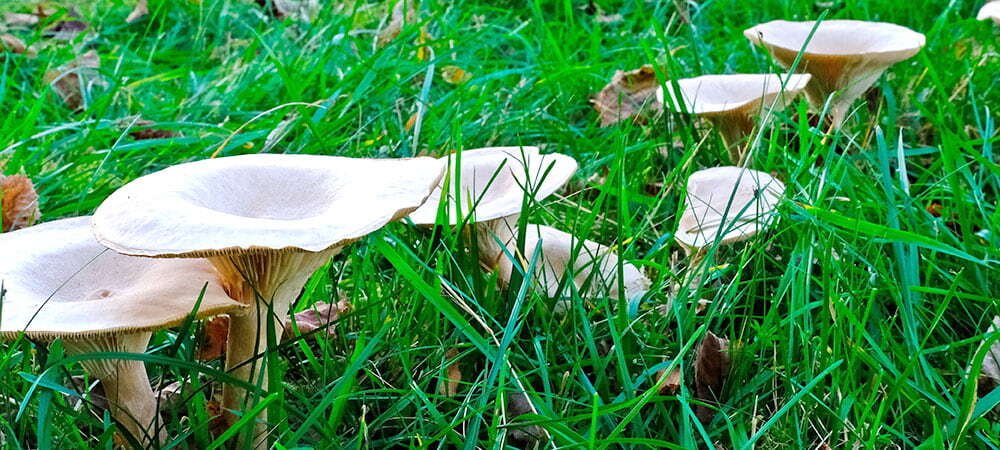5 Common Lawn Fungus Types in Virginia

From the picturesque Blue Ridge Mountains to the coastal plains, Virginia's diverse geography creates environments where different grass fungus types thrive. Here are the top 5 most common lawn fungi you might encounter in your Virginia yard, and what to do about them.
Grass Fungus Types
In Virginia, as in many other regions, various grass fungus types can pose challenges to lawns and landscapes. Some common grass fungus types that you might encounter in Virginia include:
1. Brown Patch
This fungal disease thrives in warm, humid conditions and can affect various types of grasses. It causes circular or irregular patches of brown, dying grass with a darker border. Brown Patch is often prevalent during the hot and humid summer months.
2. Dollar Spot
Dollar Spot is characterized by small, circular patches of bleached or straw-colored grass that resemble silver dollars. It's particularly common in cool-season grasses like Kentucky bluegrass and fine fescues. It tends to appear during periods of high humidity and moisture stress. This is also one of the most common lawn diseases that occur in Bermuda Grass.
3. Powdery Mildew
Powdery mildew is a fungal disease that creates a white, powdery growth on the grass blades. It's more likely to occur in shaded and damp areas, especially during cool, humid conditions.
4. Necrotic Ring Spot
This disease causes irregular rings or dead or dying grass patches, often with a green center. It's most commonly found in lawns with a high thatch layer and can be challenging to manage.
5. Fairy Ring
Fairy rings create circular patches of darker, healthier grass surrounded by rings of either dead grass or areas with unusually vibrant grass growth. These rings are caused by different fungi and can vary in appearance.
Lawn Fungus Treatment
DIY lawn fungus treatments can be effective if you catch the problem early and are consistent in your efforts. Here are some DIY treatments you can consider for addressing lawn fungus issues:
- Neem Oil Spray: Neem oil is a natural fungicide and insecticide. Mix neem oil with water according to the manufacturer's instructions and spray it onto the affected areas of your lawn. Neem oil can help control various fungal diseases.
- Baking Soda Spray: Baking soda has antifungal properties and can be used to control diseases like powdery mildew. Mix 1 tablespoon of baking soda with 1 gallon of water and a few drops of mild dish soap. Spray this solution onto affected areas.
- Milk Spray: Milk has been shown to have antifungal properties. Mix 1 part milk with 9 parts water and spray it on your lawn. This can be effective against diseases like powdery mildew.
- Cornmeal: Cornmeal can suppress fungal growth. Apply cornmeal to your lawn according to the manufacturer's instructions. It's often used as a preventative measure.
- Organic Lawn Fertilization: Use organic fertilizers with low nitrogen content. Excessive nitrogen can promote fungal growth. Look for fertilizers labeled as "slow-release."
- Remove Infected Debris: Rake up and remove dead grass, leaves, and other debris from your lawn to prevent the spread of fungal spores.
- Use Disease-Resistant Grass Varieties: When reseeding or overseeding, choose grass varieties that are resistant to common fungal diseases in the Virginia area.
Choose ALM for Lawn Fungus Control
DIY lawn treatments don't always work; sometimes, you have to call in the professionals! Here at Agronomic Lawn Management, our experts have years of experience dealing with all types of lawn fungus in Virginia. Contact us today to learn more about our services!
